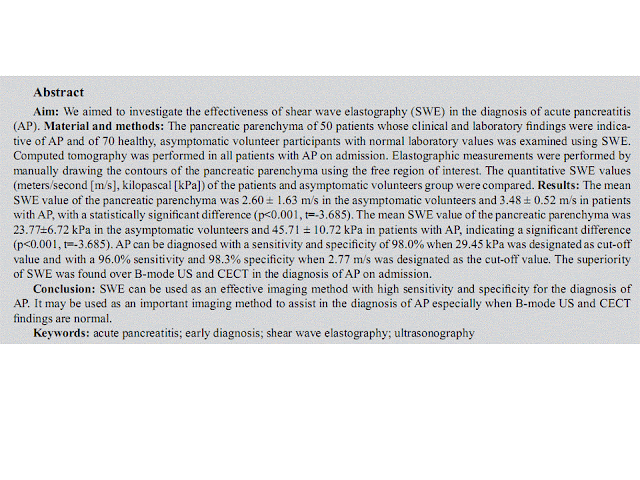By Kate Madden Yee, AuntMinnie.com staff writer
April 26, 2018 -- Astronauts armed with a compact ultrasound system successfully performed scans on each other while on the International Space Station. The scans were part of a study to assess spinal changes during long-term spaceflight that could lead to back pain, researchers wrote in the April issue of the Journal of Ultrasound in Medicine.
A group from Henry Ford Hospital worked with NASA to train astronauts on the International Space Station to use ultrasound for imaging the spines of their colleagues during flight. The researchers found that it was feasible to teach these novice users to use ultrasound effectively for this purpose. In addition, the data collected could help in the development of countermeasures to protect astronauts' spines during spaceflight, as well as the creation of protocols for treating injury once the astronauts have returned.
"Focused ultrasound monitoring of the spine for longitudinal changes during long-duration spaceflight may influence additional strategies or nutrition/drug therapies to reduce disk degeneration," lead author Kathleen Garcia and colleagues wrote. "[Our] study demonstrates a potential role for ultrasound in evaluating spinal integrity and alterations in the extreme environment of space."
Aches and pains
Starting with the Apollo program and continuing into the International Space Station era, moderate to severe back pain has been a common medical complaint among astronauts, corresponding author Dr. Scott Dulchavsky, PhD, told AuntMinnie.com.
"When there's no gravity, the spine loosens, making it less stable and putting stress on muscles and ligaments," he said. "The spine can actually elongate by as much as three inches, and that puts astronauts at higher risk of problems when they return."
MRI and CT are the clinical standards for spinal imaging, but they aren't available in space. Ultrasound can be carried on space vehicles thanks to its compact size, but a framework for imaging spinal structures in space hasn't been clearly formulated, Garcia's team wrote.

Dr. Scott Dulchavsky, PhD, from Henry Ford Hospital.
To address this problem, the researchers developed an ultrasound protocol for spaceflight, and they investigated whether astronauts on the International Space Station could effectively perform ultrasound assessments of the lumbar and cervical regions of the spine. Seven astronauts participated in the study and served as both ultrasound operators and research subjects; two additional crew members were trained as backup operators. The exams were read remotely, and the researchers then compared these in-flight results with preflight and postflight MRI and ultrasound exams (
J Ultrasound Med, April 2018, Vol. 37:4, pp. 987-999).
The astronauts were trained six months before their mission via an online program that included a review of spinal anatomy, procedure demonstrations, equipment setup orientation, and a software review, as well as a one-hour, hands-on session during which they alternated between patient and operator roles. The exams were conducted with
GE Healthcare's Vivid q device, a laptop-sized ultrasound scanner. The astronauts were assisted remotely by experts at NASA's Lyndon B. Johnson Space Center in Houston.
When the astronauts underwent the exams, they were placed supine on a medical restraint system on board the space station. To evaluate the effects of a lack of gravity on the spine over time, each study participant had three in-flight ultrasounds: one at day 30, one at day 90, and one at day 150.
The astronauts easily obtained high-quality images of the lumbar and cervical vertebrae, the researchers found. Overall success rates for image acquisition were 95% in the lumbar spine and 90% in the cervical spine. In addition, there was "no appreciable difference in success rates for either image acquisition or image quality between expert operators and astronaut crew members in the lumbar and cervical regions," they wrote.
The study findings fill in a data gap, according to Garcia and colleagues.
"Given the previous void of in-flight spinal imaging capabilities in space, to our knowledge, this study represents the first attempt to monitor microgravity-associated acute changes to the spine while they are occurring," they wrote.
Greater purpose
One of the benefits of this kind of research is that the findings can influence healthcare on Earth, according to Dulchavsky.
"By putting smart people into constrained environments like space, we can find solutions to health problems that can be used beyond the space station," he said. "Our work here found not only that nonphysicians can be trained to effectively use imaging devices, but it also pointed to further research on exercise and dietary regimens that could help keep the spine healthy in patients on Earth."
As the U.S. sets its sights on sending astronauts on longer missions -- such as to Mars -- understanding how the human body is affected by space is crucial, Garcia and colleagues wrote.
"As the duration of space missions continues to increase, [ultrasound's utility] will only gain importance in monitoring crew health and diagnosing disorders," the group concluded. "Further investigations should be performed to corroborate this imaging technique and to create a larger database related to in-flight spinal disorders during long-duration spaceflights.












